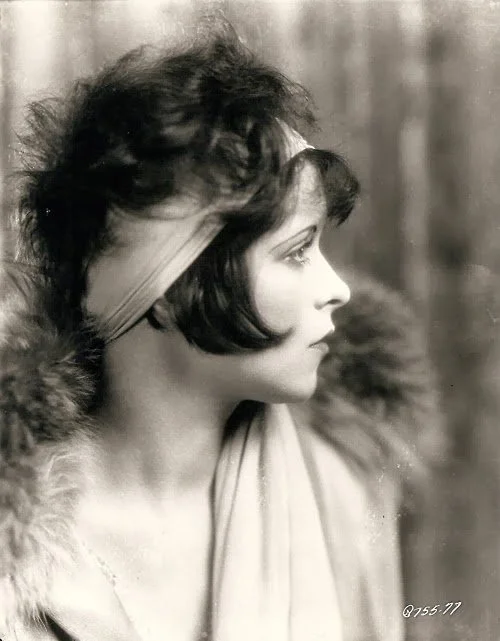One studio bigwig remembered: “Millions of followers wore their hair like Clara’s and pouted like Clara, and danced and smoked and laughed and necked like Clara.”
Clara Bow
as Cultural Icon
Taylor Swift’s recent song brings renewed attention to a long-celebrated, widely miscast heroine of American feminism, Clara Bow.
A historian of the 1920s, I study Clara’s fame and her cultural legacy. I write historical interpretation for her ranch in rural Nevada, where I teach graduate students the many intersections of labor, gender, and culture. I oversee a collection of her personal artifacts, including clothing and a hand-tooled makeup case as seen in the photo gallery below.
I can tell you this: every 12-year-old kid singing in the shower and making friendship bracelets with the girls needs to know the name Clara Bow.
Clara Bow was the first global superstar and walked away at the height of her fame. She made 58 films in a career that spanned little more than a decade. Complete with lip biting and flirty eyes, Clara played the 1920s’ “flapper” to the hilt in her portrayals of Bubbles McCoy in Red Head (1928) and Kittens Westcourt in Dancing Mothers (1926). Clara Bow was insanely sexy. Her ability to steal a scene and her expressive face inspired legions of fans, who sent 45,000 letters a month at the height of her fame in 1929.
Clara Bow endured public scrutiny and searing social criticism. As seen in the primary sources above, an intrusive press covered everything from Clara’s legal drama to latest beau. In 1926, Photoplay told readers that Clara “plays the reckless younger generation—on and off the screen” and reported of a boyfriend who she “kissed so hard that his jaw was ‘sore for two days.’”
And that was on the very nice side of what they wrote.



